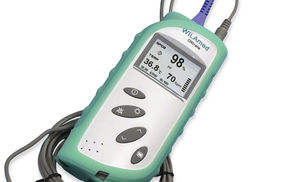
Intensive care ventilator WILAflow infantCPAP
Add to favorites
Compare this product
fo_shop_gate_exact_title
Characteristics
- Applications
- intensive care
- Patient type
- infant
- Ventilation mode
- CPAP
Description
In Europe, the proportion of preterm infants lies between 5% and 11% and has risen continuously in the past ten years. Premature babies are now the largest group of patients in the neonatal medical care1. By the degree of physical development at birth, and in the course of life, the risk to suffer health problems, including pulmonary diseases, increases significantly2. Hence, adequate medical care and appropriate respiratory therapy are of great importance during the first weeks and months of life. To prevent chronic lung damage, noninvasive respiration – rather than invasive – methods are preferred. These include, inter alia, nCPAP applications (nasal Continuous Positive Airway Pressure), which are even more gentle for the infant if active respiratory humidification is applied. With WILAflow, an universal gas supply unit with pressure monitor and its accessories, WILAmed introduces a nasal CPAP ventilation. WILAflow persuades through its effective therapy. The nCPAP system supports spontaneous respiration in infants, without assuming too much own breathing. WILAflow comes in combination with an active nCPAP generator, which keeps the applied nCPAP pressure constant. An efficient and supportive respiratory gas supply is achieved from the first minute of life. nCPAP therapy with WILAflow provides an efficient solution through:
less breathing work
gentle and variable CPAP flow
firm CPAP lung pressure
less RDS (Respiratory Distress Syndrome)
leakage reduction and compensation of “bloated stomach”
easy application
Catalogs
No catalogs are available for this product.
See all of WILAmed ‘s catalogs*Prices are pre-tax. They exclude delivery charges and customs duties and do not include additional charges for installation or activation options. Prices are indicative only and may vary by country, with changes to the cost of raw materials and exchange rates.


